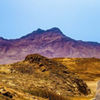
Kilimanjaro – More than just a climber’s dream


The roof of Africa
Climbing this 5,895-metre-tall iconic mountain isn’t enormously popular amongst adventurers for no reason. Kilimanjaro is in fact the tallest mountain in Africa, comprising of two dormant volcanoes (Kibo and Mawenzi) and an extinct one (Shira). It is also the world’s highest freestanding mountain and was declared a National Park in 1973, a UNESCO World Heritage Site in 1987, and a Natural Wonder of Africa in 2013. It is said that the word Kilimanjaro is derived from the Swahili word “Kilima” (mountain) and the KiChagga word “Njaro” (whiteness), essentially translating the name to “white mountain” and hence, paying tribute to its snow-capped peak.

Getting there
The park is located about 45 kilometres to the west of Kilimanjaro International Airport. The national park can be accessed by road through one of seven gates spread around the mountain. The closest one is in Marangu, about 86 kilometres from the International Airport, which is also where the park's headquarters are located.

Get comfortable
When climbing a mountain for several days, one tends to need some rest occasionally. Luckily, the park provides accommodation and campsites. In Mandara, Horombo, and Kibo - at the foot of Kilimanjaro - you can find comfortable mountain huts. Once you get closer to the summit, however, the resting options turn more basic. Up there, you can pitch your tent at one of the 22 campsites along the way to all three summits.

Conquering the summit of Kibo
The most obvious thing to do at the park is to climb to the summit of the Kibo Crater at 5,895 metres above sea level. To do so takes between five to eight days and every fit person can do it. Each of the six routes leading up to the peak presents different challenges and attractions. For those seeking a thrill on two wheels, the biking route will be the way to reach the roof of Africa. Furthermore, if you are an experienced paraglider or skydiver and are willing to carry a parachute or wingsuit up to the summit, you can enjoy an airborne descent.

Rappelling from Mawenzi peak
A more technically challenging adventure is to climb to Mawenzi peak at 5,149 metres above sea level. Unlike Kibo peak, Mawenzi is not easily accessible, as it consists of steep rock faces and cliffs. To get to the top of one (or all) of the seven sub-peaks, climbing equipment and technical climbing experience are required. However, the view you get at the top of Mawenzi is equally as rewarding as the one you get at the top of its taller sibling, Kibo.

Hiking up to Shira peak
Welcome to the oldest of the three peaks! It is also the smallest of them all, with a height of 3,962 metres. Although it doesn’t look as impressive next to Kibo and Mawenzi, doesn’t mean that Shira is any less spectacular. When the peak collapsed, it formed a plateau of outstanding beauty that is frequented by several large migratory mammals such as buffaloes, elephants, and particularly elands.

Other non-summit bound activities
There are many places to explore in the national park, even if you don’t want to go to the summits of Kibo and Mawenzi. Besides hiking up to the Shira Plateau, you can visit the Lauwo waterfalls, hike to the Maundi crater with its panoramic views of the Lakes Chala, Jipe, and Nyumba ya Nungu, and visit cultural sites such as Kifunika and the surrounding villages. Furthermore, the park has a unique mountain forest with endemic plants that are waiting to be discovered and is also a great place observe wildlife, especially birds that live in this high-altitude region.

Good deeds
It is safe to say that a visit to the national park is worth the journey, as you will be awarded with an unforgettable experience. However, that’s not all! With your visit, you support the work of the Kilimanjaro National Park as well as the umbrella organisation of all National Parks in Tanzania (TANAPA), and hence the protection of the wildlife that calls this place home. Furthermore, you being there helps support local livelihoods, and knowing that will make your experience even more rewarding.
Header - Photo by Sergey Pesterev on Unsplash
Paragraph 1 - Photo by Harshil Gudka on Unsplash
Paragraph 2 - Photo from Africaanswers.com
Paragraph 3 - Photo by wirestock on Freepik
Paragraph 4 - Photo by B SPO on Unsplash
Paragraph 5 - Photos by Rainer Braehler on Pixabay
Paragraph 6 - Photo by Kilimanjaro National Park
Paragraph 7 - Photo by Tanzania Tourism on Flickr











